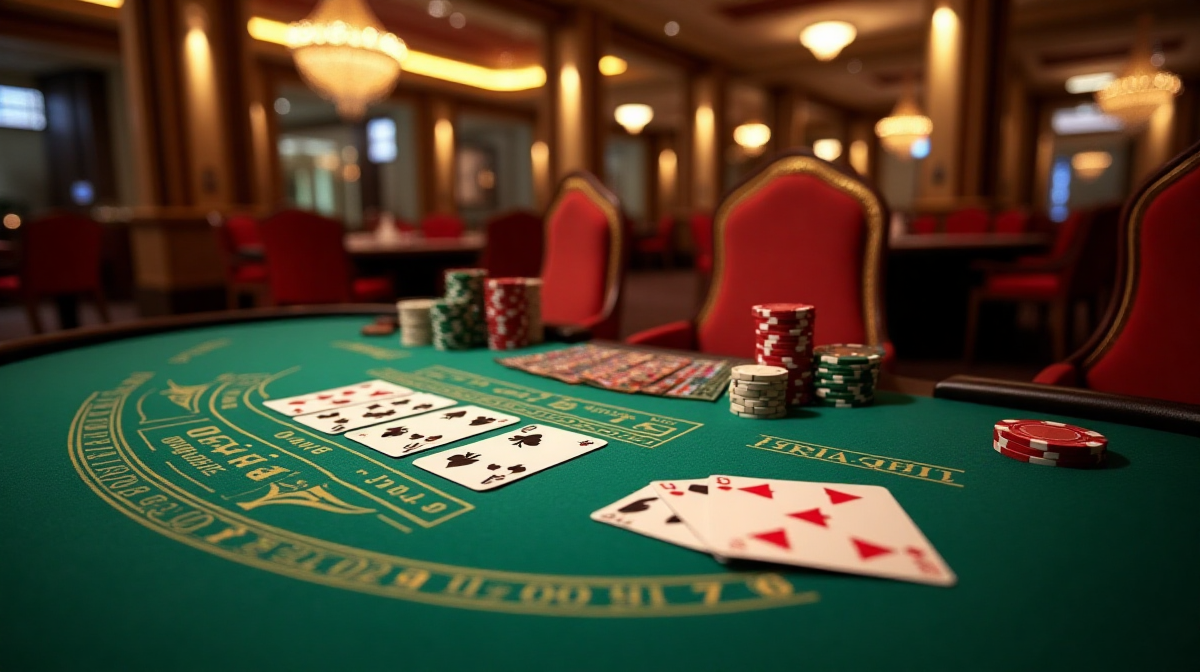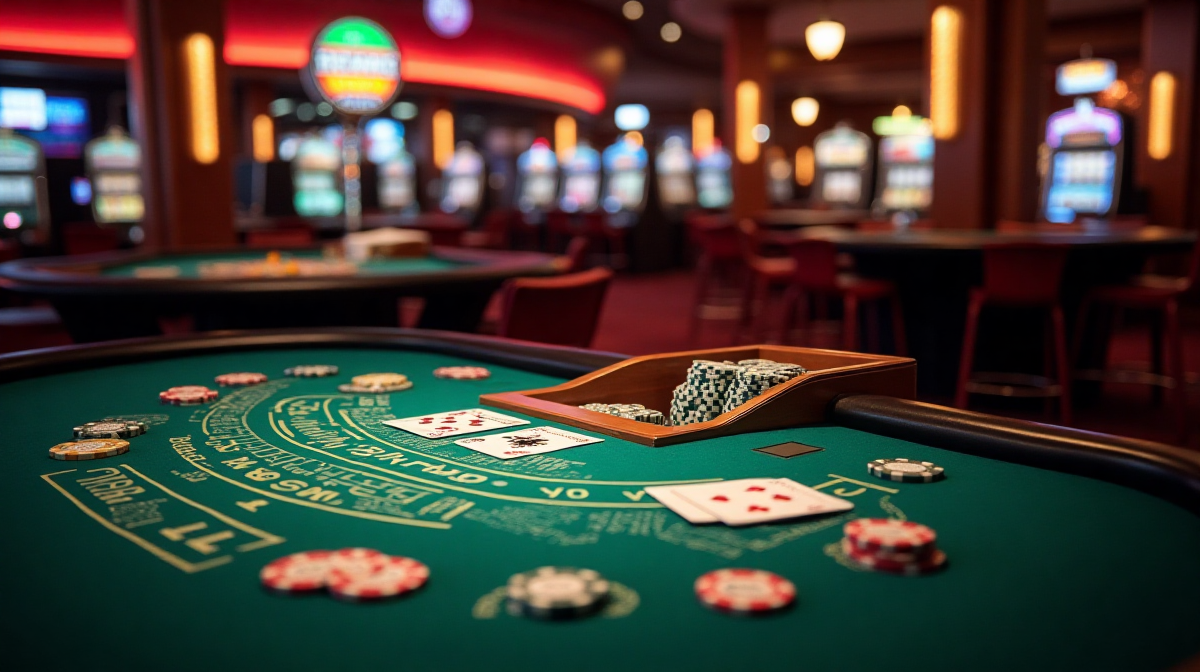Blackjack 21: 5 Winning Strategies You NEED Now
What Makes Blackjack So Popular?
Blackjack, also known as 21, holds a unique position in the casino world. Unlike many games based purely on luck, blackjack combines chance with skill and strategy. Its roots trace back to the French game “Vingt-et-Un” (Twenty-One) in the 18th century, evolving over time to become the modern game we know today. The appeal lies in the player's ability to influence the outcome through informed decisions, creating a sense of control and engagement. Many players are also exploring convenient platforms like Khelo24bet to enjoy the game from anywhere.
Dispelling Common Blackjack Myths
Many misconceptions surround blackjack. One common myth is that card counting is easy and guarantees profits. While card counting is a viable strategy, it requires significant practice, concentration, and isn't without its risks. Another myth is that casinos actively prevent players from winning. While they don’t want you to win, they ensure fair play – within the house edge. Finally, some believe that “hot” or “cold” streaks exist – each hand is independent.
Setting Realistic Expectations: Blackjack Isn’t Guaranteed Wins
It’s crucial to understand that blackjack doesn’t offer guaranteed wins. The house always has an edge, though strategic play can minimize it. Blackjack is a game of probabilities, and even with perfect play, you won’t win every time. Success comes from consistent, informed decisions and responsible bankroll management. For those who prefer playing on the go, the khelo24bet app offers a seamless experience.
Mastering Basic Strategy – The Foundation of Winning
What is Basic Strategy in Blackjack?
Basic strategy is a mathematically derived set of plays that tells you the optimal action to take in any given situation, based on your hand and the dealer's upcard. It minimizes the house edge and maximizes your chances of winning. It’s not about predicting the future; it’s about making the most statistically advantageous decision in the present moment.
Understanding the Basic Strategy Chart
A blackjack strategy chart is a visual guide displaying the correct play for every possible hand combination. These charts typically show player hands across the top and dealer upcards down the side. The intersections indicate whether to hit, stand, double down, or split. You can easily find these charts online, and many casinos even allow you to use them at the table.
How to Use a Basic Strategy Chart Effectively
Using a chart effectively requires practice. Start by memorizing the chart for hard totals (hands without an Ace counted as 11). Then, move on to soft totals (hands with an Ace counted as 11). Avoid relying on intuition; strictly follow the chart's recommendations. The more you practice, the more automatic the correct plays will become. Players looking for convenient withdrawal options will appreciate the functionality of the khelo24bet withdrawal app.
Basic Strategy and House Edge: How it Impacts Your Odds
By consistently employing basic strategy, you can reduce the house edge to as low as 0.5%. Without it, the house edge can be significantly higher, potentially exceeding 2%. This difference in percentage translates to a substantial impact on your long-term winning potential.

Smart Bankroll Management – Protecting Your Wins
Defining Your Bankroll and Session Limits
Bankroll management is arguably as important as basic strategy. Your bankroll is the total amount of money you've allocated for blackjack. Determine a reasonable bankroll based on your financial situation and risk tolerance. Set session limits – a predetermined amount you’re willing to risk in a single session – and stick to them.
Understanding Unit Size
A unit represents a specific percentage of your bankroll. A common recommendation is to bet 1-2% of your bankroll per hand. This ensures that even during losing streaks, you won’t deplete your funds too quickly. Adjust unit size based on your comfort level and bankroll size.
Progressive Betting Systems: Are They Worth It?
Progressive betting systems, like Martingale (doubling your bet after each loss) or Paroli (increasing your bet after each win), seem appealing but are generally not recommended. They can lead to rapid bankroll depletion, especially during prolonged losing streaks. While they might offer short-term gains, they don’t alter the underlying house edge.
Knowing When to Walk Away: Loss Limits & Profit Targets
Set both loss limits and profit targets. If you reach your loss limit, stop playing, even if you feel close to recovering your losses. Similarly, if you reach your profit target, cash out and enjoy your winnings. Discipline is key to long-term success. Platforms such as Khelo24bet make managing your funds easier.
Card Counting – Beyond the Myth
Demystifying Card Counting: It's Math, Not Magic
Card counting isn't about memorizing every card played. It's a system of assigning values to cards as they are dealt, allowing you to estimate the composition of the remaining deck. A positive count indicates more high-value cards remain, favoring the player, while a negative count suggests more low-value cards.
The Hi-Lo System: A Beginner-Friendly Card Counting Approach
The Hi-Lo system is the most popular and relatively simple card counting method. Cards 2-6 are assigned a value of +1, cards 7-9 are neutral (0), and cards 10-Ace are assigned a value of -1. You keep a running count as cards are dealt, adjusting your bets based on the count. For example, a high count might warrant a larger bet.
Recognizing Counting Signals and Adjusting Bets
The true count is the running count divided by the estimated number of decks remaining. This provides a more accurate representation of the deck composition. Increase your bet proportionally to the true count, but always be mindful of casino surveillance. Knowing when to play blackjack 21 optimally is crucial.
Legal & Ethical Considerations of Card Counting
Card counting is not illegal, but casinos have the right to refuse service to anyone they suspect of counting cards. They may ask you to leave or ban you from the premises. While not illegal, it’s often frowned upon by casinos.
Understanding Dealer's Play – Leveraging Their Constraints
The Dealer's Rules: Hit on 16, Stand on 17
The dealer in most blackjack games must hit on 16 or less and stand on 17 or more. This rule significantly impacts your strategy. Knowing this constraint allows you to make informed decisions based on the dealer’s likely actions.
Exploiting Dealer's Limitations: When to Double Down & Split
The dealer's rules dictate when it's advantageous to double down (double your bet and receive one more card) or split pairs (separate two cards of the same rank into two hands). For example, doubling down on 11 against a dealer's upcard of 10 is generally a strong play. Splitting Aces or 8s is also often recommended.
Situations Where the Dealer is at a Disadvantage
The dealer is at a disadvantage when they have a low upcard (e.g., 5 or 6) because they are more likely to be forced to hit and potentially bust. These situations present opportunities for you to increase your bets and capitalize on the dealer’s vulnerability.
Recognizing Favorable and Unfavorable Dealer Upcards
Favorable upcards for the player include low cards (2-6), while unfavorable upcards include high cards (7-Ace). Adjust your strategy accordingly, being more conservative when the dealer has a strong upcard and more aggressive when they have a weak one.

Game Selection & Table Etiquette – Optimizing Your Environment
Choosing the Right Blackjack Variant
Different blackjack variants offer varying rules and house edges. Single-deck blackjack generally has the lowest house edge, but it's becoming increasingly rare. Double-deck blackjack is also favorable. Avoid games with unfavorable rules, such as 6:5 payouts for blackjack (instead of 3:2).
Identifying Beneficial Table Rules
Look for tables with rules that benefit the player, such as the dealer standing on soft 17 (an Ace counted as 11 with other cards totaling 17) and the ability to double down after splitting pairs. These rules can significantly improve your odds.
Basic Blackjack Table Etiquette: Dos and Don’ts
Follow basic table etiquette to ensure a smooth and enjoyable gaming experience. Don’t touch your cards after they’ve been dealt. Use hand signals to indicate your actions (hit, stand, double down, split). Be respectful of other players and the dealer.
Online vs. Land-Based Blackjack: Differences and Strategies
Online blackjack offers convenience and lower minimum bets, but it lacks the social interaction of land-based casinos. Ensure you are playing on a reputable and licensed online platform like Khelo24bet. The core strategies remain the same, but you may need to adjust your bankroll management based on the online environment.
Recap of the 5 Winning Strategies
We’ve covered five essential strategies for improving your blackjack game: mastering basic strategy, practicing smart bankroll management, understanding card counting (for intermediate players), leveraging dealer’s constraints, and optimizing your game selection and table etiquette. Implementing these strategies will significantly enhance your chances of success.
Practice Makes Perfect: Resources for Improving Your Game
Numerous resources are available to help you hone your blackjack skills. Online simulators and trainers allow you to practice basic strategy and card counting without risking real money. Books and articles provide in-depth explanations of advanced strategies.
Final Thoughts: Responsible Gambling & Long-Term Success
Blackjack is a thrilling game of skill and chance. Remember to gamble responsibly, set limits, and never bet more than you can afford to lose. Consistent application of these strategies, combined with discipline and patience, will put you on the path to long-term success. Remember to explore the features offered by platforms like Khelo24bet to enhance your experience.

